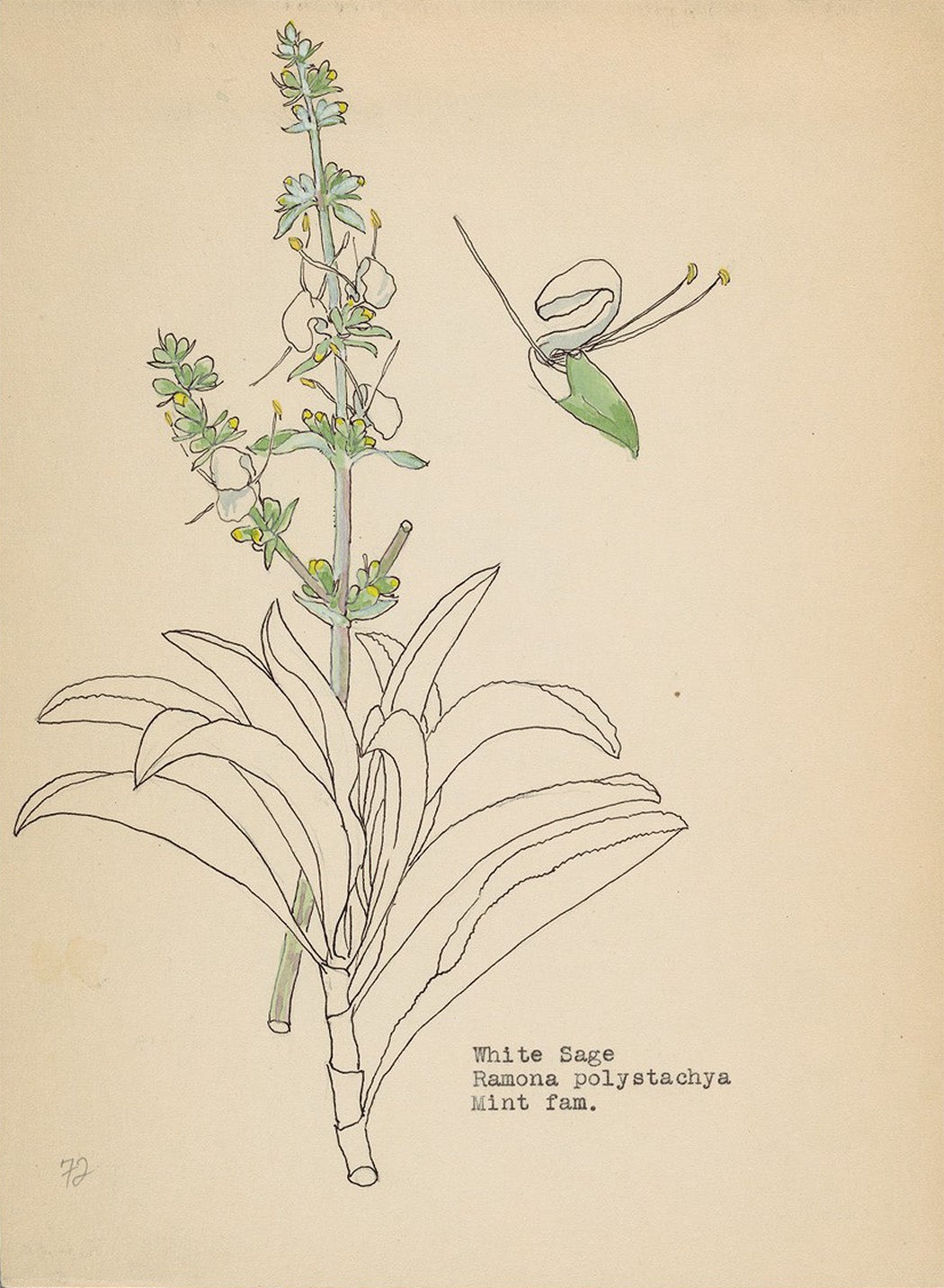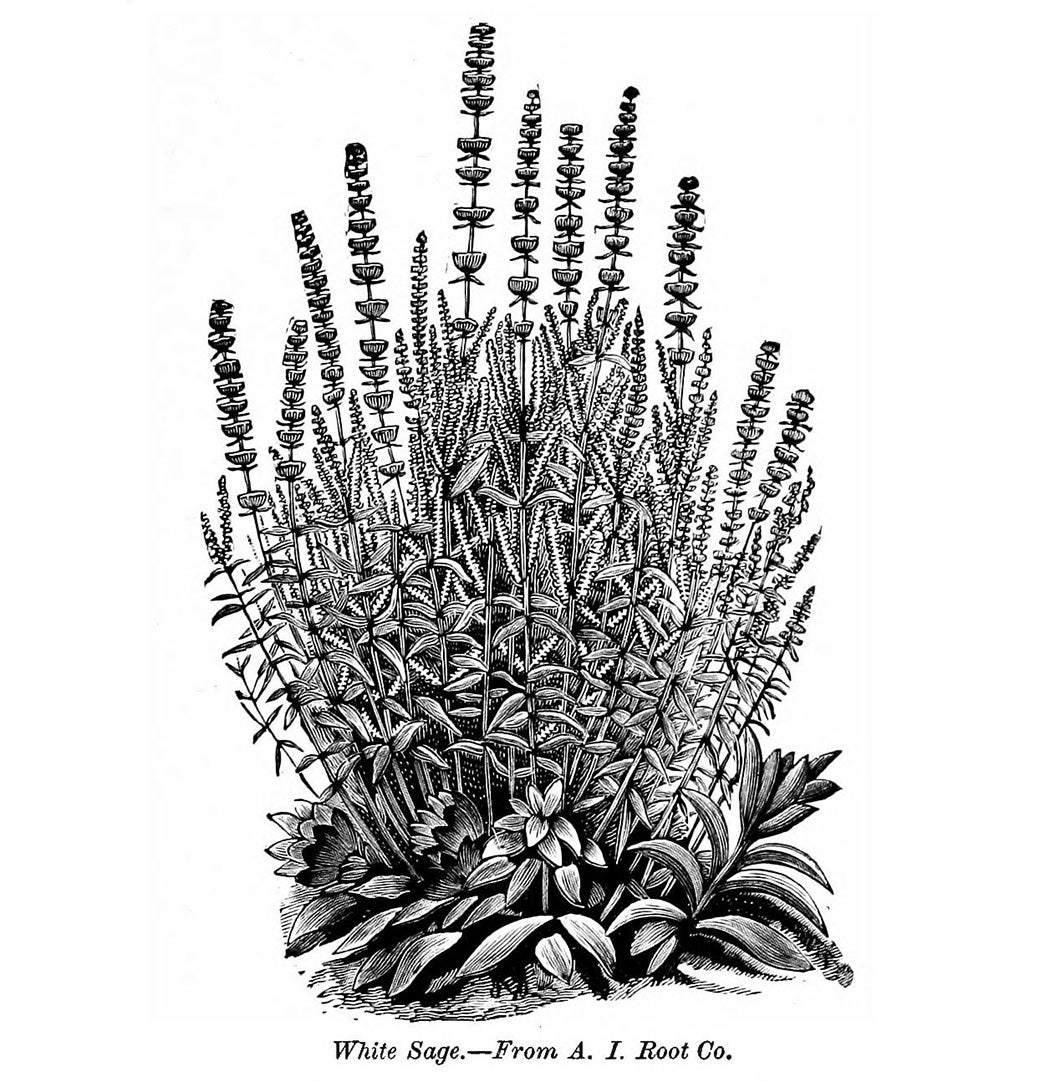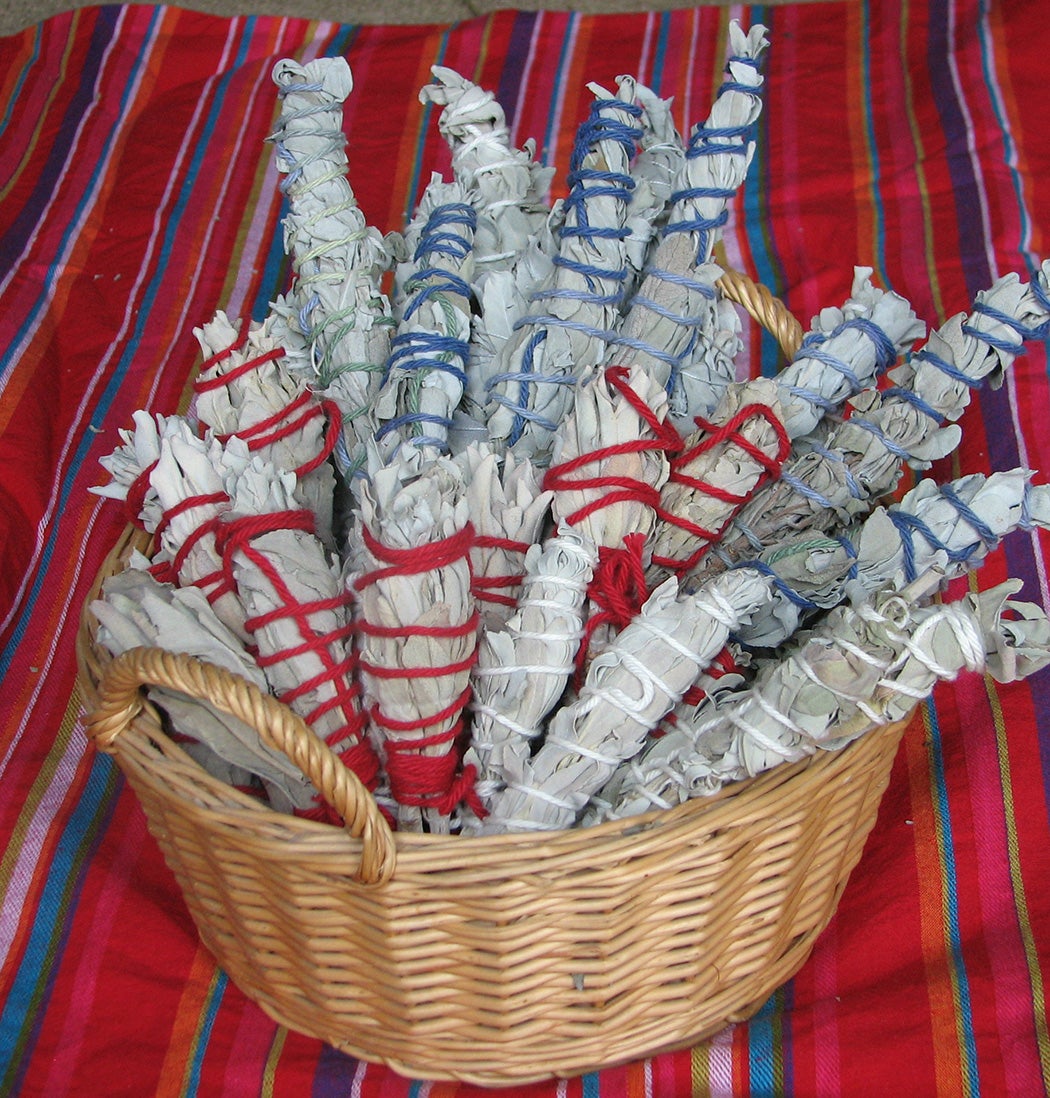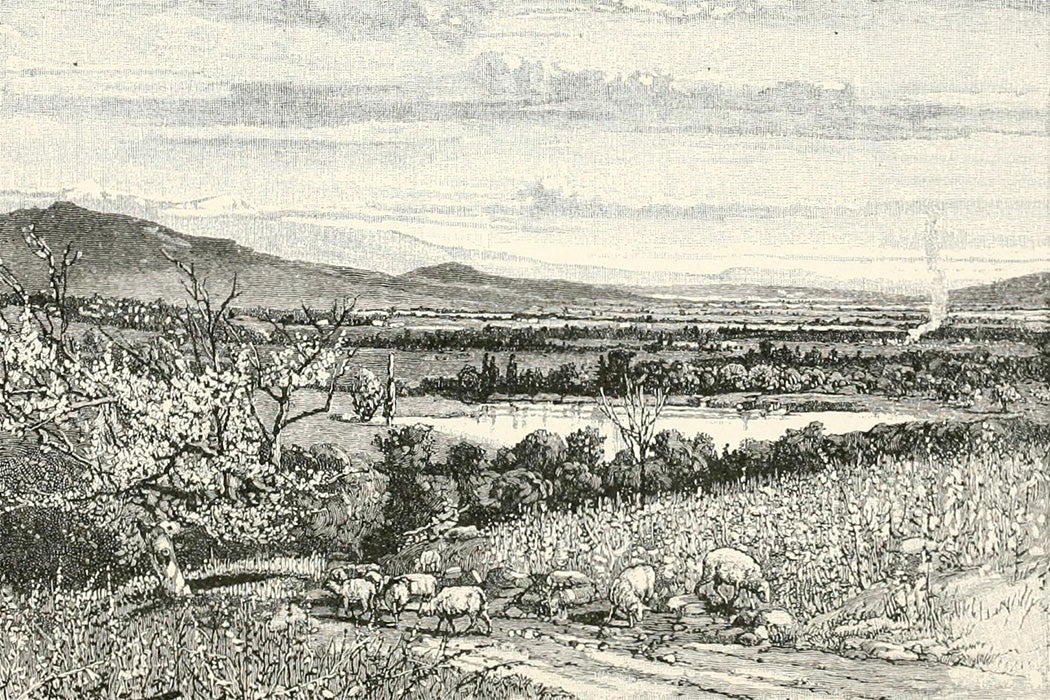In June 2021, Samantha Morales-Johnson posted a thread to her Twitter account about receiving 300 pounds of illegally harvested white sage that had been confiscated by park rangers at the Etiwanda Nature Preserve. Morales-Johnson, an ethnobotanist and member of the Gabrielino (Tongva) Band of Mission Indians, tweeted that initially, she was excited—300 pounds was a “lifetime supply” that could be distributed to members of her community who had trouble accessing the sacred plant.
Morales-Johnson had no idea how much 300 pounds of sage really was. It was crammed into three duffel bags, and thirty pounds were destroyed after fermenting and cooking in the heat and pressure of the bags. The 300 pounds represented only a fraction of the sage illegally taken from the Etiwanda Preserve each year, but the visual was still staggering. She likened it to being promised a pet but receiving a corpse on her doorstep instead.

White sage (Salvia apiana, Ramona polystachya) is a highly aromatic, evergreen perennial shrub that has been medicinally and ceremonially significant to Indigenous peoples in California and Mexico for thousands of years. It’s a member of the mint family (Lamiaceae) and an integral component of coastal sagebrush in southwestern and Baja California—white sage’s only natural wild habitat.
White sage has been widely recognized as an important bee food plant. Apiary guidebooks began recommending keeping bees near white sage in the mid-19th century; Willis Jepson wrote that a hive would yield about one hundred pounds of white sage honey in a good season, and The Bee-Keeper’s Guide reported that white sage kept bees “roaring with activity” during California summers. Scientific American reported in 1897 that white sage helped “supply the bees with…sweets.” In La Cría de las Abejas, a copy of which is available at the Dumbarton Oaks Rare Books Library, Mexico’s Ministry of Development instructed beekeepers to establish hives amidst dense white sage populations because the increased productivity could double or triple honey profits.
Various ethnobotanical sources record the Cahuilla Band of Indians, the Chumash, the Kumeyaay, the Mahuna, and other Native nations using white sage as a staple food, a spice, shampoo, deodorant, a cold remedy, cough medicine, and a pain reliever for headaches, rheumatism, and body aches. Leaves were burned on hot coals to fumigate houses after serious illnesses like measles, tuberculosis, and smallpox.
As a ceremonial plant, white sage has even more uses. Kumeyaay girls lie on beds of leaves during coming-of-age ceremonies, Cahuilla hunters used it to prevent bad luck, and many nations present bundles of white sage as gifts and offerings. But the most well-known practice is smudging. Smudging (or smoke cleansing) with white sage is sacred to many Indigenous nations of California and Mexico, and it has become popular with Indigenous peoples elsewhere in the last seventy years.

White sage’s contemporary popularity begins with federal Indian policy. In 1956, the US government passed Public Law 959, which allowed the Secretary of the Interior to institute vocational training programs for Native people living on or near reservations. Through these programs, the Bureau of Indian Affairs encouraged Native families to leave reservations and relocate to urban centers like Denver, Chicago, and Los Angeles. As Native communities grew in California’s cities, Indigenous Californians formed relationships with Natives from around the US and introduced them to white sage. Its similarities to other sacred plants led many Natives to adopt it for their own use.
The 1960s and 70s saw the rise of counterculture, hippie, and New Age movements that often adopted non-Christian religious and spiritual practices. Many hippies were fascinated by Native culture and co-opted certain aspects of it, including practices like burning sage. Ideas and practices with a hippie, New Age, or “witchy” flavor–things like crystals, astrology, and tarot–have entered the mainstream in the past decade and are often marketed as components of spiritual and mental wellness.

Enter smudging and the wellness industry’s obsession with white sage. At present, white sage smudge sticks are sold at countless big box and online retailers. Some promise spiritual cleansing that will “remove all the negative energies and experiences from the room” that is smudged. Others offer their customers the ability “to bring balance and calm into their lives.” One company describes its Smudging Trio as “a beauty routine for the space within and around you.”
Many of these listings also use words like “sustainable” and “ethically sourced.” While small-scale sellers often grow their own sage, and some larger-scale commercial farms do exist, most white sage reaches markets through workers who harvest sage and sell it to middlemen, who then provide it wholesale for larger retailers. Retailers often use the term “wildcrafted” to refer to sage that’s harvested from the “wilds” of white sage’s limited natural habitat.
“Wildcrafted” is usually a euphemism for “poached.” Under California Penal Code Section 384a, it’s illegal to harvest plant material on public or on privately owned land without written permission of the owner. Because there are so few large-scale commercial white sage farms, most white sage in US markets has been illegally taken from private or public land.
Indigenous knowledge requires harvesting white sage in a respectful way, usually taking only a few leaves each time. Many Native people refer to white sage as a relative; Heidi Lucero (Acjachemen and Mustun Ohlone) encourages cultivating relationships with plants, reminding us that, “You wouldn’t go and pull your grandmother out by the roots.” In contrast, poachers cut off branches or rip whole plants out of the ground, taking so many that the plants are unable to repopulate. White sage has become so depleted in other areas that poachers in the US are now targeting nature reserves. These poachers may be marginalized workers themselves; according to the Gabrieleno (Tongva) Band of Mission Indians, poachers are often undocumented workers from Mexico and South America who, when caught, can be fined or deported with no consequences to middlemen or corporate buyers.
Weekly Newsletter
Herein lies an irony of white sage commercialization: many Indigenous practitioners say that white sage should never be bought and sold because the energy of the person who harvested the medicine comes with it. If a plant is overharvested in a disrespectful way for the sake of profit, it negates the good energy that comes from smudging. Commercialization also directly harms Native people who use white sage; it depletes the supply, preventing them from sustainably harvesting it. They have to resort to buying it, perhaps from the same companies putting white sage at risk.
Even though its numbers are rapidly declining, white sage isn’t classified as endangered, or even threatened. However, national attention has rapidly turned toward white sage conservation and the ethical problems its commercialization poses. United Plant Savers has placed S. apiana on its Species At-Risk list, and organizations like the California Native Plant Society are amplifying the voices of Indigenous activists working to protect white sage. Non-Indigenous Americans are also becoming more aware of the history and ethics associated with white sage smudging thanks to these efforts, and growing conversations about cultural appropriation and conservation mean that mainstream perceptions of white sage and its use are changing. Shifting cultural perceptions and appreciations of plants over time are exactly what the Dumbarton Oaks Plant Humanities Initiative seeks to investigate.








